My Dad
This is a picture of my Father, Lewis Burleigh Sheen, Jr. taken sixteen years before I was born.
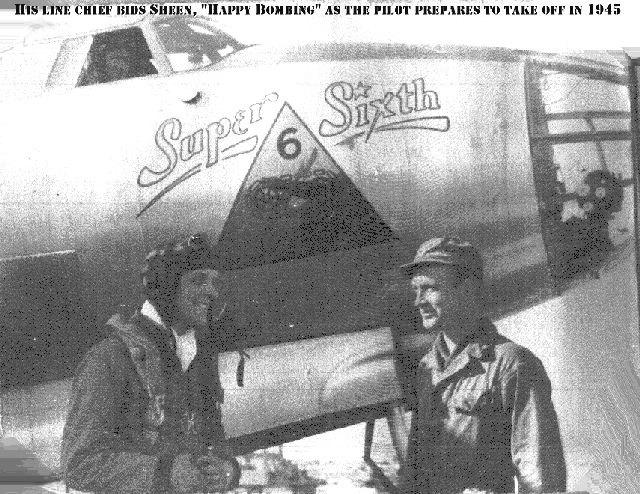
Dad's the smiling, dashing, shadowy pilot on the left in the forground.
The nose art tells us that this was not Dad's plane, which was adorned with a naked pin-up painting, and the name, The Secksma Sheen.
The caption was on a piece of paper taped to the back of the photograph.
Also on that piece of paper, in light, neat cursive handwriting, in pencil, was
"Page 13, July 16"
This just in! A photograph of my Dad's plane -- with another of its crews, not Dad's -- is available on the web at: http://www.b26.com/marauderman/richard_ainsworth.htm.
I stole the image. Here it is:
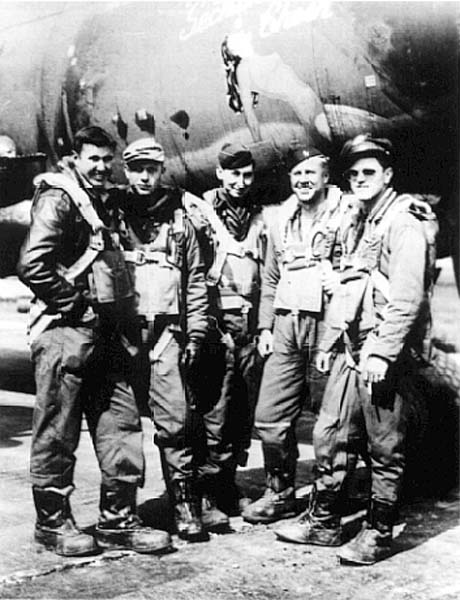
The crew here: L-R: William Dale Matlock (tech Sergeant), H.E. Dean, tail gunner; Richard C. Everett, Radio/Gunner; Lt. Richard A. Ainsworth, Co-Pilot; Lt. Richard H. Gunn, Pilot.
Apparently, the Gunn/Ainsworth crew flew many missions on Dad's plane.
According to http://www.harwood.plus.com/558thBS.htm, the Secksma Sheen was a B-26B-15, KX-G, Serial Number 41-31647, and it Crashed 26 Dec 44 after 110 missions -- the third most of any plane in its Bomb Group.
Here are four more pictures of my Dad, courtesy of Colonel Walter C. "Clyde" Harkins, who served with my Dad during World War II.
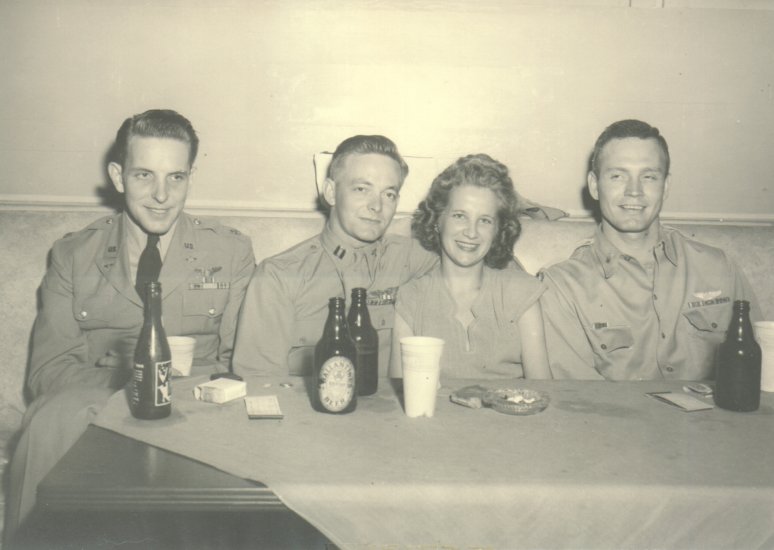
Seen here: Dad, Clyde Harkins, his wife, Amy, and an unidentified Lieutenant, in Greensborough, North Carolina, in August, 1945. Returning veterans reported there for their next assignments.
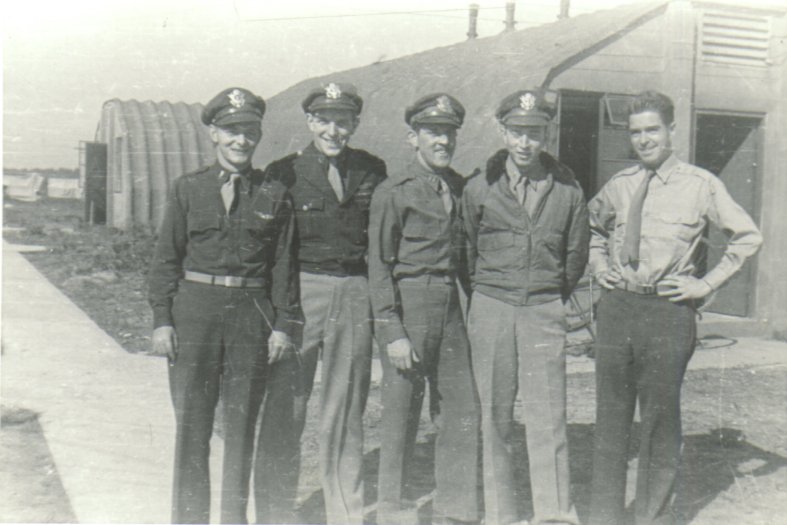
Clyde Harkins, Dad, a Captain Snyder, and two others, in Chipping Ongar, England, returning home after 65 missions, in 1944.
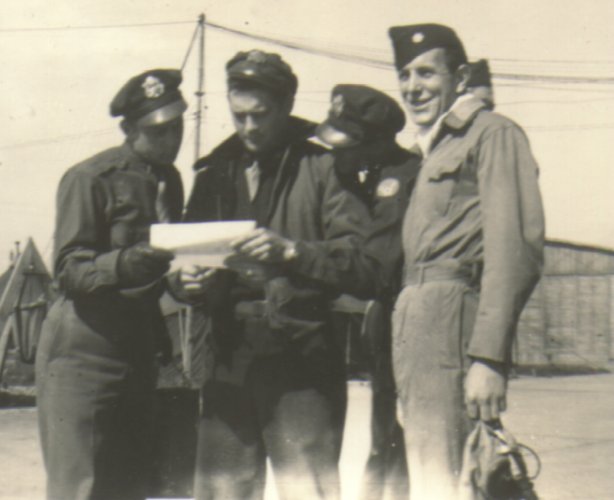
Captain Gunn, Lieutenant Block, Lieutenant Butterfield, and my Dad, at their Air Base near St. Quentin, France, in 1944.
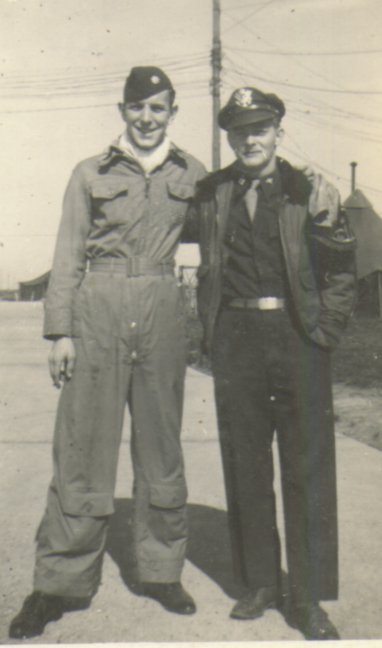
My Dad with Clyde Harkins, at St. Quentin, France, in the winter of 1944. Dad had just returned from flying a combat mission.
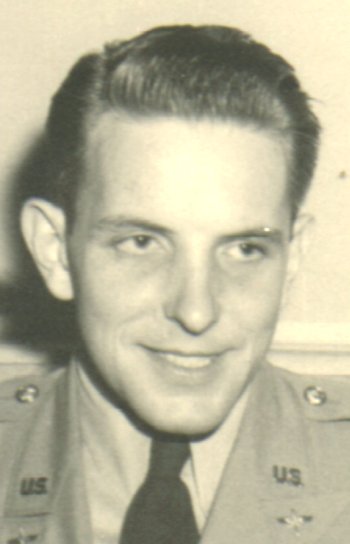
This portrait is a close-up taken from the first picture Colonel Harkins provided above.
Here, courtesy of Col. Robert W. Keller, Dad's C.O., is Dad shaking hands with Captain Rollin Childress, a flight leader.
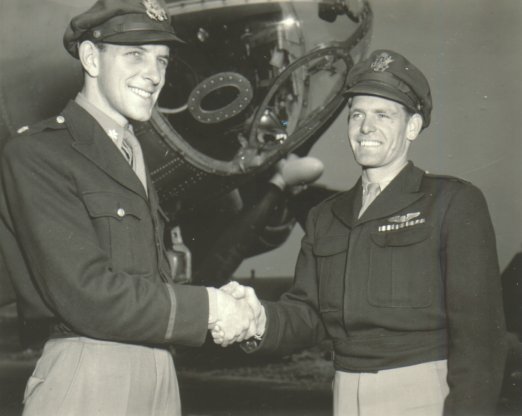
Also through the good graces of Col. Keller, we see what has been the "Holy Grail" of my searches, a photo of my Dad and his flight crew standing in front of the "Secksma Sheen." The nose art is beautifully clear here. Dad is standing at the left. Notice that he's wearing moccasins! Boy does that bring me back! Click the image for a larger version. According to Jon Beazer, this picture is "believed to be taken by my grand father Wendell Beazer."
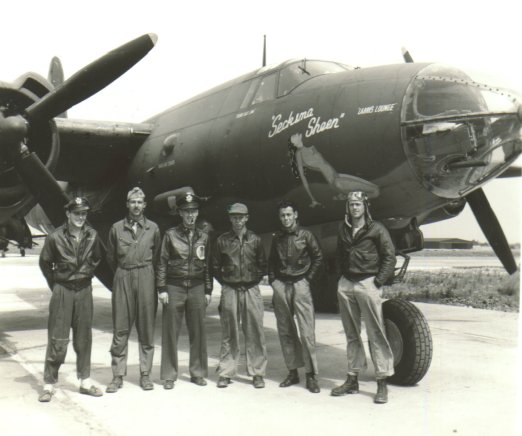
The crew, left to right: Major Lewis Burliegh Sheen, Jr: Pilot; Lt. James Miller: Co-pilot; Lt. Lawrence O'Brien: Navigator-Bombadier; S/Sgt. Randall Murff: Engineer - gunner; S/Sgt. William Lindsey: Radio Operator-gunner; Sgt. Vearl Jasperson: Gunner
Once again, a closeup of Dad that's a detail cropped from a shot above, this time the shot of Dad shaking hands with Captain Childress. Again, click the picture for a larger version.
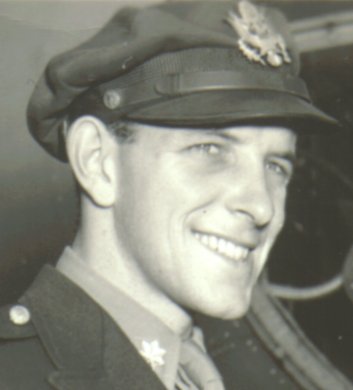
Colonel Keller comes through with another picture of Dad, his crew, and what I mistakwenly thought to be the Secksma Sheen. (According to Brian Gibbons, It's actually an earlier model B-26, identifiable by the pain on the engine nacelles, nose-cones, and the .30 calibre, rather than .50 calibre, machine guns.) I took an unconsionaby long time getting this shot scanned and returning it to Colonel Keller, for which he has my apologies.
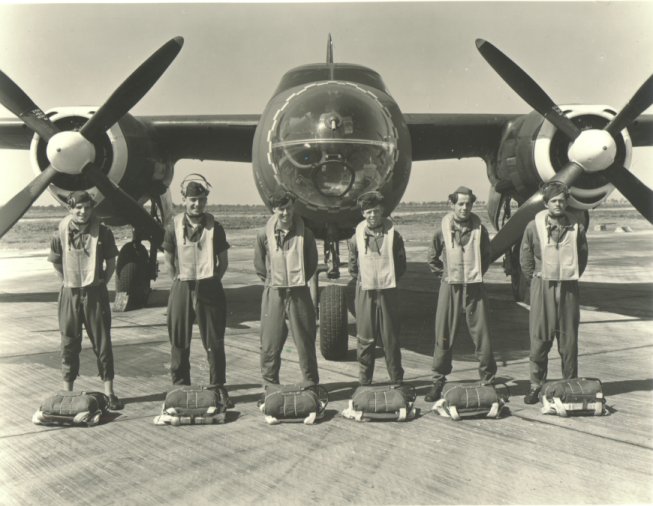
Click the picture for a larger view
And a close-up of Dad from that shot:
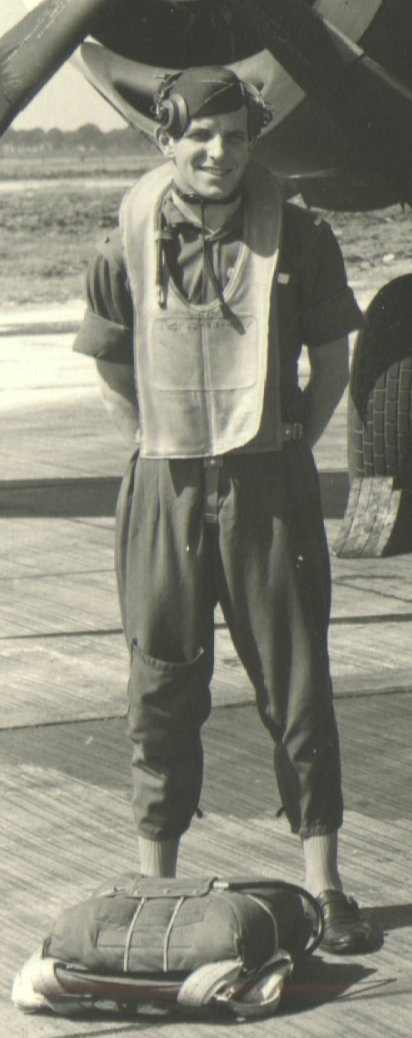
Tom Britton just sent me this picture:
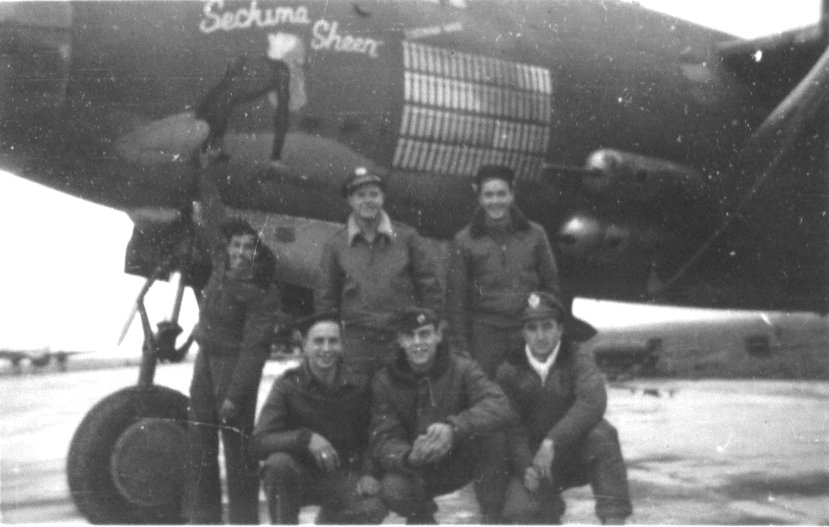
Tom tells me: "The crew in front of the aircraft is Capt. Dan Morse's. I was Dan's Bombardier-Navigator...the kid wearing the white silk scarf."
Another lovely shot of the Secksma Sheen has been found online my brother Lew. I haven't identified any of the gentlemen pictured here.
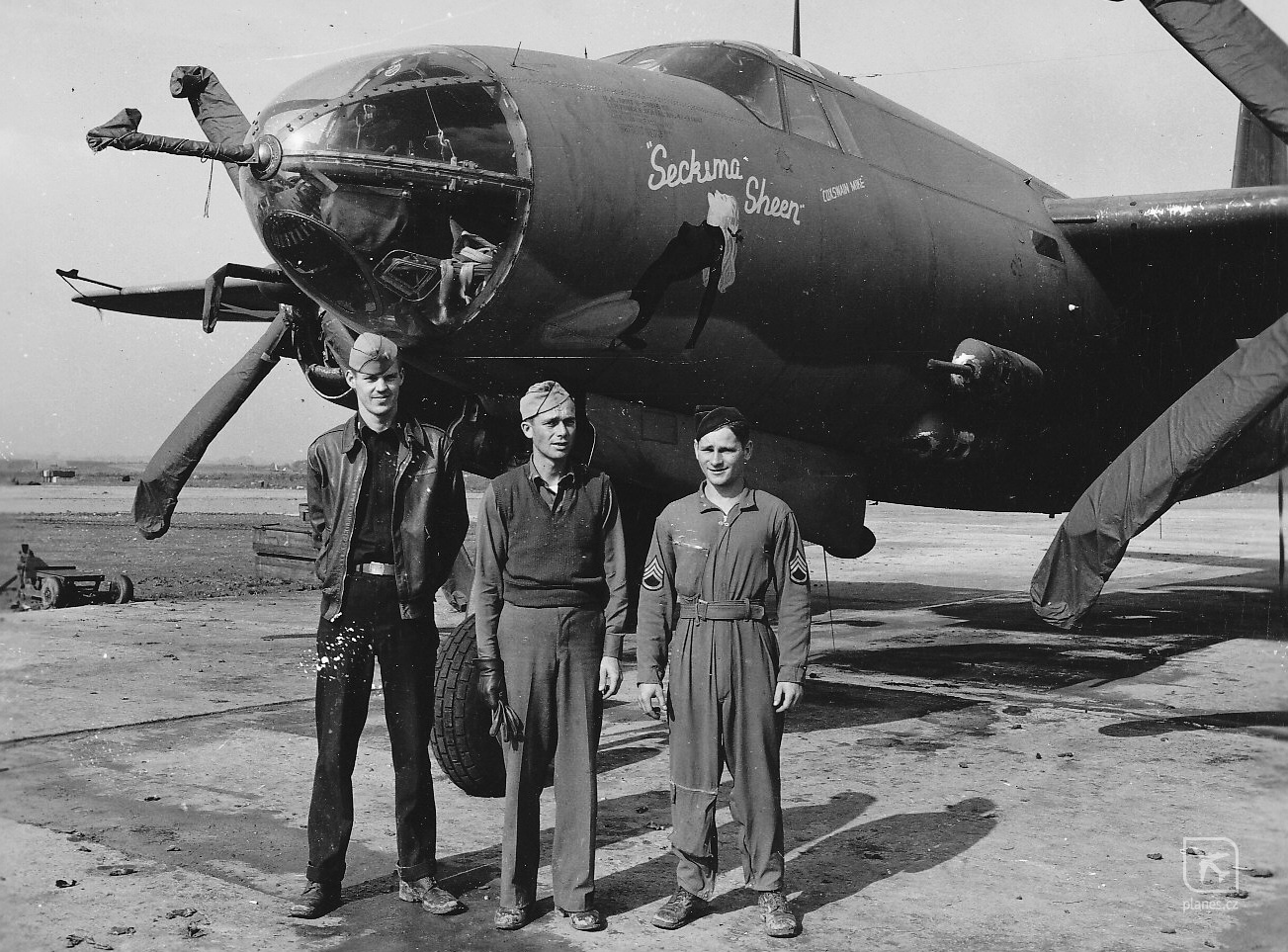
Paul Osborne and Nick Challoner hunted through the fields, and found the airfield at Chipping Ongar as it is today.
This is a story of something that happened to my dad flying out of Chipping Ongar:
His flight was getting close to their target when Major Sheen -- known to his friends as "Mike," after his boyhood collie, Micky -- hit the switches to open the bomb bay doors then lower the bomb rack, preparing for the bombing run. The doors opened just fine, but when the rack (which could carry a bomb load of either four 1,000-pound bombs, two 2,000-pound bombs, six 600-pounders, twelve 300-pounders, or thirty 100-pounders, although I don't know which configuration was in use here) started to move, Mike Sheen heard a horrible metallic SCREEEEECH!!!!!! A quick visual check by a crewman told him that the rack had come partway out of its moorings and was hanging askew, unable to be lowered far enough to drop the bombs, nor retracted so the doors could be closed.
Mike radioed back to Chipping Ongar, outlined the situation, and asked for instructions. He was told to "orbit" over the English Channel while the situation was considered.
The Secksma Sheen circled, and waited, and the fuel gauge dropped, and they circled, and waited, and eventually Sheen radioed back and told his commanders, "Look, if you want us to ditch, we'll ditch. If you want us to land, we'll do that. But if you're going to make a decision, you have to do it _now_, because the fuel gauge is about to make it for you!"
Reluctantly, through clenched teeth, they told him to come back to Chipping Ongar and land.
As the Secksma Sheen approached the runway, Mike Sheen could see the runway lined with all manner of emergency vehicles. He lined up for his landing.
Now, the Marauder was not a particularly easy plane to fly. It was known as "The Widowmaker" because it was _so_ aerodynamic that it was particularly difficult to take off or land without the lift on the wings and tail flipping the plane on its nose. One consequence of this was that there were no soft, smooth, "airline-style" landings in a B-26. You had to plant that thing firmly on the runway, with an authoritative slam.
And that's what Mike Sheen did that day, lining up the tricycle landing gear, pulling back the throttle, firmly controlling the stick, and after that hard slam of wheels against pavement, he heard another sound, an even longer, louder, tearing-metal SHRIIIIEEEEEKKKKK!!!!!!!
Then, for an instant, silence.
Then, a series of clanking thuds, rapidly diminishing, as the control tower began yammering loudly into his ear.
His rear-view mirrors showed the amazing sight: The bomb-rack, still loaded with a full complement of bombs, tumbling end-over-end down the runway behind the plane, as, in his headphones, he heard the Tower Chief screaming, "Goddammit, Sheen, bad enough we've got the Nazis after us, now YOU'RE trying to blow us up as well????"
The Secksma Sheen came to a successful, safe stop, as did her bomb rack far behind, without a single bomb going off. No-one, that day, on that crew, was killed or injured. The plane was repaired and saw more service, being destroyed in an accident on Dec 26, 1944.
My dad, Mike Sheen, didn't tell many stories about his days flying the Secksma Sheen. When he did speak about it, in his later years, he spoke with horror of the men he'd killed. I don't think he ever saw the war as any kind of grand adventure. I heard this story, not from Dad, but from my older brother, at Dad's funeral in 1990.
But it's one of the stories I prefer to remember, when I remember and honor his service.
During the Korean "Police Action" my Dad served as a U.S. Army Chaplain. Here's a picture. This looks a lot more like Dad as I remember him.
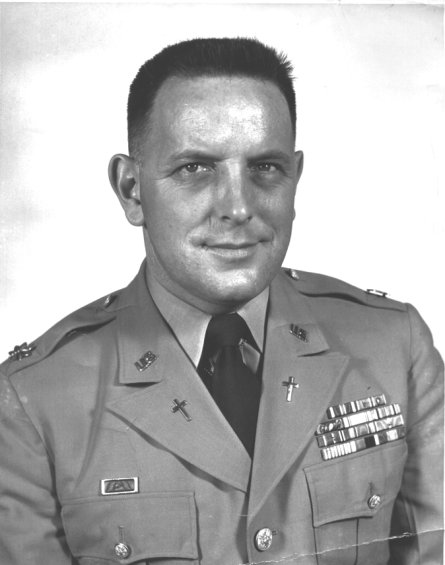
Again, click the picture for a larger version.
There's a bit here and here about Dad's service during the Korean conflict. Search for the name "Sheen" on the page.
Dad spoke about it once or twice. He was performing a service at a forward unit, and the lines moved past them overnight. He was the ranking officer on-site, so he took command of the unit and led them out, through a pea-soup fog, in the middle of the night, to friendly territory. Dad spoke of the unit marching in single file, each following the man in front of him, barely visible through the fog, while they could hear, but not see, the North Koreans marching past them through the fog.














